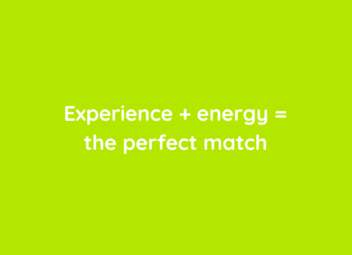
Back in April, Amy hosted Clearbox’s first ever workshop. It was all about establishing brand identities in the context of communications (our bread and butter).
During the workshop, Amy outlined the difference between marketing and PR, shared about the importance of establishing values for your brand, and gave practical advice on how to choose your brand’s key messages.
Couldn’t make it? Here’s a snapshot of what she talked about.
What is communications?
Communications is the broad term for communicating about a brand - that includes everything from internal newsletters, PR, marketing, advertising, sales, and more. It’s the means by which you get key messages about your business across to the people who matter.
A communications strategy utilises PR, marketing and social media to communicate with a target audience (or audiences). A good communications strategy creates parameters for interacting with employees, managing external stakeholders, and building a reputation with the general public in the context of a particular brand.
What is PR?
PR stands for public relations. Its focus is on a building a brand’s reputation with customers, the media and the public, or other external stakeholders. PR’s goal is to make your brand memorable, recognisable, and trusted. It’s about selling the brand as a whole, not just its products or services.
According to a World Economic Forum study, up to 25% of a company’s market value is based on reputation. That’s substantial!
PR employs a range of tactics to get brands in front of the right people. You might have heard of ‘stunts’, which are one off moments that create a buzz about a brand for a short time. As a PR agency working with a strategy, Clearbox would back that short-term buzz up by sharing further good news stories about the brand or by creating a social media campaign to keep the buzz going well beyond the stunt.
How do I know how to talk to my audience?
If there’s a gap between what you want to project and what your audience perceives about your brand - that’s things like ‘Oh, I didn’t realise you sold that.’ Or ‘Oh, is that what you do?’ - the aim of your communications strategy should be to remove that gap.
Your brand identity comes in to make sure your audience knows who you are, what you do, and what you stand for. That’s when you start to establish boundaries for how you interact with your target audience.
A good place to start with learning how to talk about your brand is by defining its values. What does it stand for? How do you want to do business through the brand?
Brand values aren’t the personality of a company, but they do underpin it. They’re the standards you hold the brand to, and can be guidelines that control the consistency of your brand’s message, both internally and externally.
To reiterate, you want people to buy into your brand emotionally. That’s what creates loyalty and repeat customers.
Clearbox’s own brand values are a strong example of what this can look like.
The next step to figuring out your brand’s identity is deciding how you want to present yourself - this gives guidance for your brand’s personality. A helpful tool for figuring out your brand’s identity is the brand archetype wheel (give it a Google).
Some of the archetypes are all about structure, some are about connecting to others, some are about leaving a mark, and the final three are about creating personal journeys. There’s lots more to it, but explaining more is a blog post in and of itself!
Choosing archetypes for your brand is useful for creating boundaries for how you present it. Someone online presented it as giving instructions to a Disney employee who has the personality of a mop so that they understand how they have to be when they’re representing Disney.
How do I choose how to be?
The easiest way to decide on your brand’s archetype is to ask why?. Why does the brand exist? What are its values?
How you get to your brand’s unique identity is by using the archetype[s] you choose as a jumping off point for creating a personality.
Adding a tone of voice, visuals, branding, and choosing the types of content you want to create, makes a personality. Your brand archetype is what makes your brand recognisable as a particular type. Your brand personality is what differentiates your brand from the competition.
What about my communications?
The personality of your brand (formed by using the archetypes and embellishing them), combines with your values to establish your communications. You back that up with a strategy, and then there you have it. Your brand’s communications strategy informs how your audience perceives you and builds affiliation - hopefully winning you repeat customers and brand fans.
Want to know more about what a communications strategy could look for your business? Hit us up - helping bring success to brands like yours is what we do.


